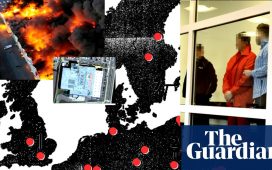Section 1. Policy. (a) This memorandum fulfills the directive set forth in subsection 4.8 of Executive Order 14110 of October 30, 2023 (Safe, Secure, and Trustworthy Development and Use of Artificial Intelligence). This memorandum provides further direction on appropriately harnessing artificial intelligence (AI) models and AI-enabled technologies in the United States Government, especially in the context of national security systems (NSS), while protecting human rights, civil rights, civil liberties, privacy, and safety in AI-enabled national security activities. A classified annex to this memorandum addresses additional sensitive national security issues, including countering adversary use of AI that poses risks to United States national security.
(b) United States national security institutions have historically triumphed during eras of technological transition. To meet changing times, they developed new capabilities, from submarines and aircraft to space systems and cyber tools. To gain a decisive edge and protect national security, they pioneered technologies such as radar, the Global Positioning System, and nuclear propulsion, and unleashed these hard-won breakthroughs on the battlefield. With each paradigm shift, they also developed new systems for tracking and countering adversaries’ attempts to wield cutting-edge technology for their own advantage.
(c) AI has emerged as an era-defining technology and has demonstrated significant and growing relevance to national security. The United States must lead the world in the responsible application of AI to appropriate national security functions. AI, if used appropriately and for its intended purpose, can offer great benefits.
If misused, AI could threaten United States national security, bolster authoritarianism worldwide, undermine democratic institutions and processes, facilitate human rights abuses, and weaken the rules-based international order.
Harmful outcomes could occur even without malicious intent if AI systems and processes lack sufficient protections.
(d) Recent innovations have spurred not only an increase in AI use throughout society, but also a paradigm shift within the AI field — one that has occurred mostly outside of Government.
This era of AI development and deployment rests atop unprecedented aggregations of specialized computational power, as well as deep scientific and engineering expertise, much of which is concentrated in the private sector. This trend is most evident with the rise of large language models, but it extends to a broader class of increasingly general-purpose and computationally intensive systems. The United States Government must urgently consider how this current AI paradigm specifically could transform the national security mission.
(e) Predicting technological change with certainty is impossible, but the foundational drivers that have underpinned recent AI progress show little sign of abating. These factors include compounding algorithmic improvements, increasingly efficient computational hardware, a growing willingness in industry to invest substantially in research and development, and the expansion of training data sets. AI under the current paradigm may continue to become more powerful and general-purpose. Developing and effectively using these systems requires an evolving array of resources, infrastructure, competencies, and workflows that in many cases differ from what was required to harness prior technologies, including previous paradigms of AI.
(f) If the United States Government does not act with responsible speed and in partnership with industry, civil society, and academia to make use of AI capabilities in service of the national security mission — and to ensure the safety, security, and trustworthiness of American AI innovation writ large — it risks losing ground to strategic competitors. Ceding the United States’ technological edge would not only greatly harm American national security, but it would also undermine United States foreign policy objectives and erode safety, human rights, and democratic norms worldwide.
(g) Establishing national security leadership in AI will require making deliberate and meaningful changes to aspects of the United States Government’s strategies, capabilities, infrastructure, governance, and organization. AI is likely to affect almost all domains with national security significance, and its use cannot be relegated to a single institutional silo. The increasing generality of AI means that many functions that to date have been served by individual bespoke tools may, going forward, be better fulfilled by systems that, at least in part, rely on a shared, multi-purpose AI capability. Such integration will only succeed if paired with appropriately redesigned United States Government organizational and informational infrastructure.
(h) In this effort, the United States Government must also protect human rights, civil rights, civil liberties, privacy, and safety, and lay the groundwork for a stable and responsible international AI governance landscape. Throughout its history, the United States has been a global leader in shaping the design, development, and use of new technologies not only to advance national security, but also to protect and promote democratic values. The United States Government must develop safeguards for its use of AI tools, and take an active role in steering global AI norms and institutions. The AI frontier is moving quickly, and the United States Government must stay attuned to ongoing technical developments without losing focus on its guiding principles.
(i) This memorandum aims to catalyze needed change in how the United States Government approaches AI national security policy. In line with Executive Order 14110, it directs actions to strengthen and protect the United States AI ecosystem; improve the safety, security, and trustworthiness of AI systems developed and used in the United States; enhance the United States Government’s appropriate, responsible, and effective adoption of AI in service of the national security mission; and minimize the misuse of AI worldwide.
Sec. 2. Objectives. It is the policy of the United States Government that the following three objectives will guide its activities with respect to AI and national security.
(a) First, the United States must lead the world’s development of safe, secure, and trustworthy AI. To that end, the United States Government must — in partnership with industry, civil society, and academia — promote and secure the foundational capabilities across the United States that power AI development. The United States Government cannot take the unmatched vibrancy and innovativeness of the United States AI ecosystem for granted; it must proactively strengthen it, ensuring that the United States remains the most attractive destination for global talent and home to the world’s most sophisticated computational facilities. The United States Government must also provide appropriate safety and security guidance to AI developers and users, and rigorously assess and help mitigate the risks that AI systems could pose.
(b) Second, the United States Government must harness powerful AI, with appropriate safeguards, to achieve national security objectives. Emerging AI capabilities, including increasingly general-purpose models, offer profound opportunities for enhancing national security, but employing these systems effectively will require significant technical, organizational, and policy changes. The United States must understand AI’s limitations as it harnesses the technology’s benefits, and any use of AI must respect democratic values with regard to transparency, human rights, civil rights, civil liberties, privacy, and safety.
(c) Third, the United States Government must continue cultivating a stable and responsible framework to advance international AI governance that fosters safe, secure, and trustworthy AI development and use; manages AI risks; realizes democratic values; respects human rights, civil rights, civil liberties, and privacy; and promotes worldwide benefits from AI. It must do so in collaboration with a wide range of allies and partners. Success for the United States in the age of AI will be measured not only by the preeminence of United States technology and innovation, but also by the United States’ leadership in developing effective global norms and engaging in institutions rooted in international law, human rights, civil rights, and democratic values.
Sec. 3. Promoting and Securing the United States’ Foundational AI Capabilities. (a) To preserve and expand United States advantages in AI, it is the policy of the United States Government to promote progress, innovation, and competition in domestic AI development; protect the United States AI ecosystem against foreign intelligence threats; and manage risks to AI safety, security, and trustworthiness. Leadership in responsible AI development benefits United States national security by enabling applications directly relevant to the national security mission, unlocking economic growth, and avoiding strategic surprise. United States technological leadership also confers global benefits by enabling like-minded entities to collectively mitigate the risks of AI misuse and accidents, prevent the unchecked spread of digital authoritarianism, and prioritize vital research.
3.1. Promoting Progress, Innovation, and Competition in United States AI Development. (a) The United States’ competitive edge in AI development will be at risk absent concerted United States Government efforts to promote and secure domestic AI progress, innovation, and competition. Although the United States has benefited from a head start in AI, competitors are working hard to catch up, have identified AI as a top strategic priority, and may soon devote resources to research and development that United States AI developers cannot match without appropriately supportive Government policies and action. It is therefore the policy of the United States Government to enhance innovation and competition by bolstering key drivers of AI progress, such as technical talent and computational power.
(b) It is the policy of the United States Government that advancing the lawful ability of noncitizens highly skilled in AI and related fields to enter and work in the United States constitutes a national security priority. Today, the unparalleled United States AI industry rests in substantial part on the insights of brilliant scientists, engineers, and entrepreneurs who moved to the United States in pursuit of academic, social, and economic opportunity. Preserving and expanding United States talent advantages requires developing talent at home and continuing to attract and retain top international minds.
(c) Consistent with these goals:
(i) On an ongoing basis, the Department of State, the Department of Defense (DOD), and the Department of Homeland Security (DHS) shall each use all available legal authorities to assist in attracting and rapidly bringing to the United States individuals with relevant technical expertise who would improve United States competitiveness in AI and related fields, such as semiconductor design and production.
These activities shall include all appropriate vetting of these individuals and shall be consistent with all appropriate risk mitigation measures. This tasking is consistent with and additive to the taskings on attracting AI talent in section 5 of Executive Order 14110.
(ii) Within 180 days of the date of this memorandum, the Chair of the Council of Economic Advisers shall prepare an analysis of the AI talent market in the United States and overseas, to the extent that reliable data is available.
(iii) Within 180 days of the date of this memorandum, the Assistant to the President for Economic Policy and Director of the National Economic Council shall coordinate an economic assessment of the relative competitive advantage of the United States private sector AI ecosystem, the key sources of the United States private sector’s competitive advantage, and possible risks to that position, and shall recommend policies to mitigate them. The assessment could include areas including (1) the design, manufacture, and packaging of chips critical in AI-related activities; (2) the availability of capital; (3) the availability of workers highly skilled in AI-related fields; (4) computational resources and the associated electricity requirements; and (5) technological platforms or institutions with the requisite scale of capital and data resources for frontier AI model development, as well as possible other factors.
(iv) Within 90 days of the date of this memorandum, the Assistant to the President for National Security Affairs (APNSA) shall convene appropriate executive departments and agencies (agencies) to explore actions for prioritizing and streamlining administrative processing operations for all visa applicants working with sensitive technologies. Doing so shall assist with streamlined processing of highly skilled applicants in AI and other critical and emerging technologies. This effort shall explore options for ensuring the adequate resourcing of such operations and narrowing the criteria that trigger secure advisory opinion requests for such applicants, as consistent with national security objectives.
3.2. Protecting United States AI from Foreign Intelligence Threats. (a) In addition to pursuing industrial strategies that support their respective AI industries, foreign states almost certainly aim to obtain and repurpose the fruits of AI innovation in the United States to serve their national security goals. Historically, such competitors have employed techniques including research collaborations, investment schemes, insider threats, and advanced cyber espionage to collect and exploit United States scientific insights. It is the policy of the United States Government to protect United States industry, civil society, and academic AI intellectual property and related infrastructure from foreign intelligence threats to maintain a lead in foundational capabilities and, as necessary, to provide appropriate Government assistance to relevant non-government entities.
(b) Consistent with these goals:
(i) Within 90 days of the date of this memorandum, the National Security Council (NSC) staff and the Office of the Director of National Intelligence (ODNI) shall review the President’s Intelligence Priorities and the National Intelligence Priorities Framework consistent with National Security Memorandum 12 of July 12, 2022 (The President’s Intelligence Priorities), and make recommendations to ensure that such priorities improve identification and assessment of foreign intelligence threats to the United States AI ecosystem and closely related enabling sectors, such as those involved in semiconductor design and production.
(ii) Within 180 days of the date of this memorandum, and on an ongoing basis thereafter, ODNI, in coordination with DOD, the Department of Justice (DOJ), Commerce, DOE, DHS, and other IC elements as appropriate, shall identify critical nodes in the AI supply chain, and develop a list of the most plausible avenues through which these nodes could be disrupted or compromised by foreign actors. On an ongoing basis, these agencies shall take all steps, as appropriate and consistent with applicable law, to reduce such risks.
(c) Foreign actors may also seek to obtain United States intellectual property through gray-zone methods, such as technology transfer and data localization requirements. AI-related intellectual property often includes critical technical artifacts (CTAs) that would substantially lower the costs of recreating, attaining, or using powerful AI capabilities. The United States Government must guard against these risks.
(c) Commerce, acting through the AI Safety Institute (AISI) within the National Institute of Standards and Technology (NIST), shall serve as the primary United States Government point of contact with private sector AI developers to facilitate voluntary pre- and post-public deployment testing for safety, security, and trustworthiness of frontier AI models. In coordination with relevant agencies as appropriate, Commerce shall establish an enduring capability to lead voluntary unclassified pre-deployment safety testing of frontier AI models on behalf of the United States Government, including assessments of risks relating to cybersecurity, biosecurity, chemical weapons, system autonomy, and other risks as appropriate (not including nuclear risk, the assessment of which shall be led by DOE). Voluntary unclassified safety testing shall also, as appropriate, address risks to human rights, civil rights, and civil liberties, such as those related to privacy, discrimination and bias, freedom of expression, and the safety of individuals and groups. Other agencies, as identified in subsection 3.3(f) of this section, shall establish enduring capabilities to perform complementary voluntary classified testing in appropriate areas of expertise. The directives set forth in this subsection are consistent with broader taskings on AI safety in section 4 of Executive Order 14110, and provide additional clarity on agencies’ respective roles and responsibilities.
(iii) Within 180 days of the date of this memorandum, AISI, in consultation with other agencies as appropriate, shall develop or recommend benchmarks or other methods for assessing AI systems’ capabilities and limitations in science, mathematics, code generation, and general reasoning, as well as other categories of activity that AISI deems relevant to assessing general-purpose capabilities likely to have a bearing on national security and public safety.
(v) Within 270 days of the date of this memorandum, and at least annually thereafter, AISI shall submit to the President, through the APNSA, and provide to other interagency counterparts as appropriate, at minimum one report that shall include the following:
(A) A summary of findings from AI safety assessments of frontier AI models that have been conducted by or shared with AISI;
(B) A summary of whether AISI deemed risk mitigation necessary to resolve any issues identified in the assessments, along with conclusions regarding any mitigations’ efficacy; and
(C) A summary of the adequacy of the science-based tools and methods used to inform such assessments.
(f) Consistent with these goals, other agencies specified below shall take the following actions, in coordination with Commerce, acting through AISI within NIST, to provide classified sector-specific evaluations of current and near-future AI systems for cyber, nuclear, and radiological risks:
(i) DOD, Commerce, DOE, DHS, ODNI, NSF, NSA, and the National Geospatial-Intelligence Agency (NGA) shall, as appropriate and consistent with applicable law, prioritize research on AI safety and trustworthiness. As appropriate and consistent with existing authorities, they shall pursue partnerships as appropriate with leading public sector, industry, civil society, academic, and other institutions with expertise in these domains, with the objective of accelerating technical and socio-technical progress in AI safety and trustworthiness. This work may include research on interpretability, formal methods, privacy enhancing technologies, techniques to address risks to civil liberties and human rights, human-AI interaction, and/or the socio-technical effects of detecting and labeling synthetic and authentic content (for example, to address the malicious use of AI to generate misleading videos or images, including those of a strategically damaging or non-consensual intimate nature, of political or public figures).
(ii) Within 120 days of the date of this memorandum, the Department of State, DOD, DOJ, DOE, DHS, and IC elements shall each, in consultation with the Office of Management and Budget (OMB), identify education and training opportunities to increase the AI competencies of their respective workforces, via initiatives which may include training and skills-based hiring.
(d) To accelerate the use of AI in service of its national security mission, the United States Government needs coordinated and effective acquisition and procurement systems. This will require an enhanced capacity to assess, define, and articulate AI-related requirements for national security purposes, as well as improved accessibility for AI companies that lack significant prior experience working with the United States Government.
(i) DOD and the IC shall, in consultation with DOJ as appropriate, review their respective legal, policy, civil liberties, privacy, and compliance frameworks, including international legal obligations, and, as appropriate and consistent with applicable law, seek to develop or revise policies and procedures to enable the effective and responsible use of AI, accounting for the following:
(A) Issues raised by the acquisition, use, retention, dissemination, and disposal of models trained on datasets that include personal information traceable to specific United States persons, publicly available information, commercially available information, and intellectual property, consistent with section 9 of Executive Order 14110;
(B) Guidance that shall be developed by DOJ, in consultation with DOD and ODNI, regarding constitutional considerations raised by the IC’s acquisition and use of AI;
(C) Challenges associated with classification and compartmentalization;
(D) Algorithmic bias, inconsistent performance, inaccurate outputs, and other known AI failure modes;
(E) Threats to analytic integrity when employing AI tools;
(F) Risks posed by a lack of safeguards that protect human rights, civil rights, civil liberties, privacy, and other democratic values, as addressed in further detail in subsection 4.2 of this section;
(G) Barriers to sharing AI models and related insights with allies and partners; and
(H) Potential inconsistencies between AI use and the implementation of international legal obligations and commitments.
(h) The United States’ network of allies and partners confers significant advantages over competitors. Consistent with the 2022 National Security Strategy or any successor strategies, the United States Government must invest in and proactively enable the co-development and co-deployment of AI capabilities with select allies and partners.
(i) On an ongoing basis, DOD and ODNI shall issue or revise relevant guidance to improve consolidation and interoperability across AI functions on NSS. This guidance shall seek to ensure that the United States Government can coordinate and share AI-related resources effectively, as appropriate and consistent with applicable law.
(i) Heads of covered agencies shall, consistent with their authorities, monitor, assess, and mitigate risks directly tied to their agency’s development and use of AI. Such risks may result from reliance on AI outputs to inform, influence, decide, or execute agency decisions or actions, when used in a defense, intelligence, or law enforcement context, and may impact human rights, civil rights, civil liberties, privacy, safety, national security, and democratic values. These risks from the use of AI include the following:
(A) Risks to physical safety: AI use may pose unintended risks to human life or property.
(B) Privacy harms: AI design, development, and operation may result in harm, embarrassment, unfairness, and prejudice to individuals.
(C) Discrimination and bias: AI use may lead to unlawful discrimination and harmful bias, resulting in, for instance, inappropriate surveillance and profiling, among other harms.
(i) Within 120 days of the date of this memorandum, the Department of State, in coordination with DOD, Commerce, DHS, the United States Mission to the United Nations (USUN), and the United States Agency for International Development (USAID), shall produce a strategy for the advancement of international AI governance norms in line with safe, secure, and trustworthy AI, and democratic values, including human rights, civil rights, civil liberties, and privacy. This strategy shall cover bilateral and multilateral engagement and relations with allies and partners. It shall also include guidance on engaging with competitors, and it shall outline an approach to working in international institutions such as the United Nations and the Group of 7 (G7), as well as technical organizations. The strategy shall:
(A) Develop and promote internationally shared definitions, norms, expectations, and standards, consistent with United States policy and existing efforts, which will promote safe, secure, and trustworthy AI development and use around the world. These norms shall be as consistent as possible with United States domestic AI governance (including Executive Order 14110 and OMB Memorandum M-24-10), the International Code of Conduct for Organizations Developing Advanced AI Systems released by the G7 in October 2023, the Organization for Economic Cooperation and Development Principles on AI, United Nations General Assembly Resolution A/78/L.49, and other United States-supported relevant international frameworks (such as the Political Declaration on Responsible Military Use of AI and Autonomy) and instruments. By discouraging misuse and encouraging appropriate safeguards, these norms and standards shall aim to reduce the likelihood of AI causing harm or having adverse impacts on human rights, democracy, or the rule of law.










